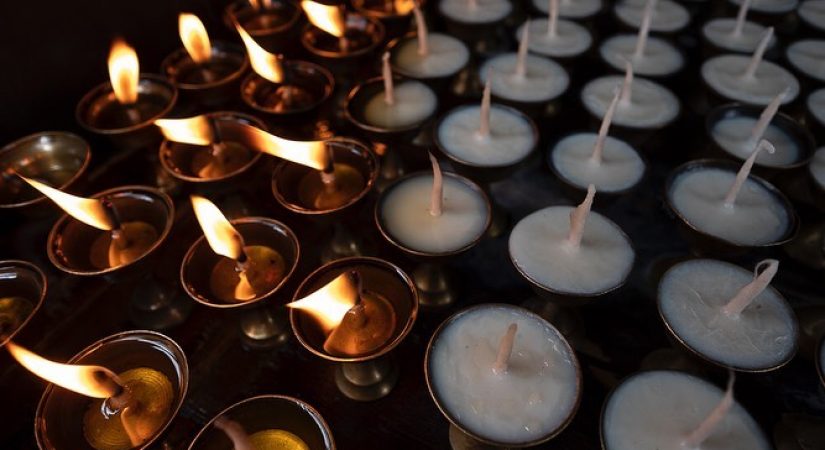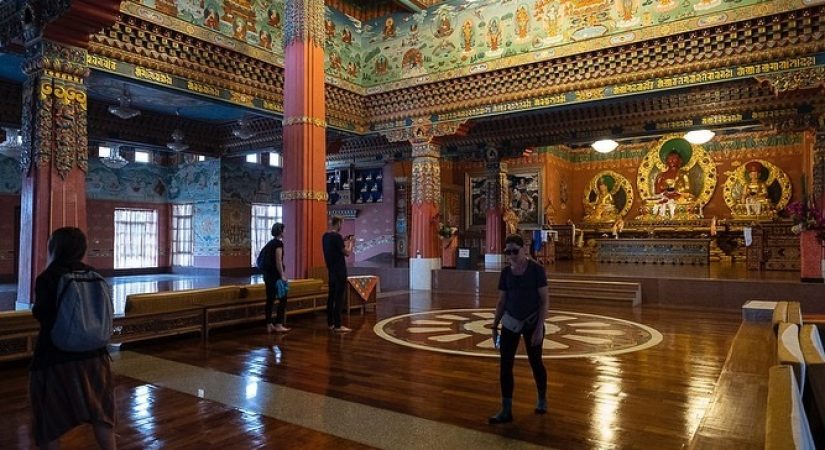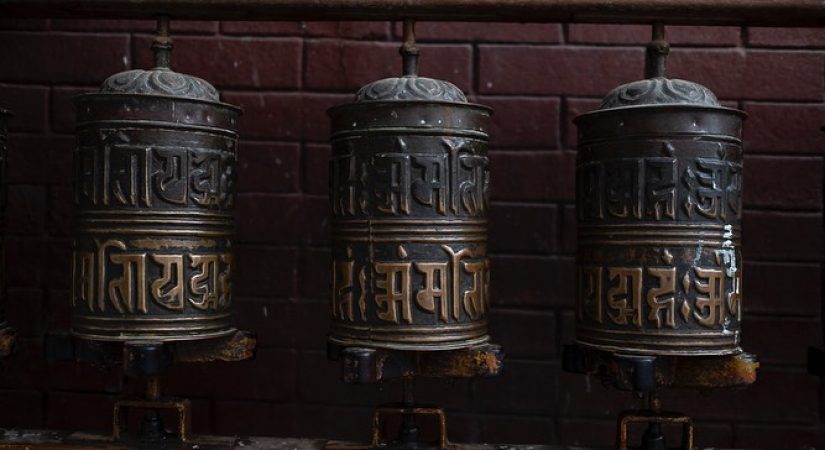1-12 people
Easy
Private Car / Taxi
Mar - May & Sept - Nov
The Kapan Monastery, also known as Kapan Gumba, is a prominent Tibetan Buddhist monastery located in the hills of Kapan, just outside of Kathmandu, Nepal. The monastery was established in 1969 by the Tibetan Lama Thubten Zopa Rinpoche and the famous Lama Thubten Yeshe, who also founded the FPMT (Foundation for the Preservation of the Mahayana Tradition).
About Kapan Monastery:
- Location: Kapan Monastery is situated in the Kathmandu Valley, offering stunning views of the surrounding mountains and the city of Kathmandu. Its location provides a peaceful and serene environment conducive to meditation and spiritual practices.
- Purpose: The monastery is a center for Tibetan Buddhism, particularly the Gelugpa tradition. It serves as a place for monks and laypeople to learn, meditate, and practice Tibetan Buddhism.
- FPMT and Education: Kapan Monastery is also a significant educational center, attracting people from around the world. It is part of the Foundation for the Preservation of the Mahayana Tradition (FPMT), an international network of Buddhist centers. FPMT’s activities include teachings, retreats, and outreach efforts to preserve Tibetan Buddhist teachings.
- The Monastery’s Role: Over the years, Kapan has become an important center for those interested in Buddhism, with thousands of students and spiritual seekers visiting the monastery each year. It offers meditation courses, teachings on Buddhism, and retreats, particularly for foreigners interested in learning more about Tibetan Buddhism.
- The Retreat Center: The monastery also offers a popular meditation retreat program, which provides an opportunity for in-depth spiritual practice, study, and reflection in a quiet and supportive environment.
Architecture and Structure:
The monastery itself is an impressive structure, with typical Tibetan Buddhist architecture, including prayer wheels, stupas, and ornate murals. The main hall is a place for worship, study, and gathering, and it also houses a large statue of the Buddha. The peaceful atmosphere is enhanced by the surrounding gardens and natural beauty of the area. Kapan Monastery continues to be a vital part of the Tibetan Buddhist community and a significant spiritual hub in Nepal.
Kapan Monastery (Kapan Gumba) is a vibrant spiritual center that offers a wide range of activities for both monks and visitors, especially those interested in learning about Tibetan Buddhism and deepening their practice. Here are some of the main activities and programs at Kapan Monastery:
1. Buddhist Teachings and Lectures
Kapan Monastery regularly holds teachings on various aspects of Tibetan Buddhism, particularly within the Gelugpa tradition. These teachings are typically delivered by the resident lamas and visiting masters. Topics can range from fundamental Buddhist philosophy to advanced practices. Visitors, both locals and international, are welcome to attend these teachings.
2. Meditation Courses and Retreats
The monastery is well-known for its meditation courses, which cater to both beginners and advanced practitioners. These programs often include guided meditation sessions, mindfulness practices, and teachings on meditation techniques. Retreats are organized for those seeking a deeper spiritual experience, with the opportunity to immerse themselves in intensive meditation practices over several days or weeks.
3. Study Programs for Lay People
Kapan Monastery offers study programs aimed at lay Buddhists who want to deepen their understanding of Buddhist philosophy and practice. These programs often involve a mix of lectures, group discussions, and study materials that focus on Tibetan Buddhist texts, ethics, and meditation.
4. Monastic Life and Community Activities
Monks at Kapan Monastery engage in daily rituals, prayers, and study. The daily schedule often includes puja (ritual prayers), chanting, and studying sacred texts. Monks also engage in community service and act as teachers for those interested in learning the monastic way of life. Visitors can observe or participate in some of these activities.
5. FPMT Programs and Retreats
As part of the Foundation for the Preservation of the Mahayana Tradition (FPMT), Kapan Monastery organizes FPMT programs, which include study and retreat programs focused on Tibetan Buddhist teachings, meditation, and the cultivation of compassion. These programs may vary in length and depth, and they attract participants from all over the world.
6. Pilgrimages and Prayer Rituals
The monastery is a place for pilgrimage for many Tibetan Buddhists and other spiritual seekers. Visitors can join group prayers or prayer rituals, especially on special Buddhist holidays and festivals. Vajrayana practices, including mantra recitations and prayers for world peace, are often conducted, and there are opportunities for individuals to receive blessings from the monks.
7. Charity and Social Welfare Activities
Kapan Monastery has been involved in a number of charitable and social welfare activities. They support orphans, sponsor education for Tibetan refugees, and provide meals for the community. Many of these initiatives are supported by the donations of visitors and supporters of the monastery.
8. Cultural and Buddhist Festivals
Kapan Monastery celebrates various Buddhist festivals throughout the year, such as Losar (Tibetan New Year), Saga Dawa (celebrating Buddha's birth, enlightenment, and death), and Lama Tsongkhapa's Day, which honors the founder of the Gelugpa school of Tibetan Buddhism. These festivals are marked with special rituals, prayers, dances, and community gatherings.
9. Visiting and Volunteering Opportunities
Kapan Monastery welcomes volunteers from all over the world to help with various tasks, such as maintaining the grounds, assisting with administrative work, or supporting charitable efforts. Volunteers often have the chance to learn from monks and participate in the monastery’s spiritual life while helping with daily activities.
10. Spiritual Pilgrimages and Stupa Visits
Visitors can also take part in pilgrimages around the monastery’s sacred stupas, which are symbols of the Buddha's enlightened mind. These pilgrimages are both a form of physical exercise and spiritual practice, with participants circumambulating the stupas while reciting mantras and prayers.
Trip Outline
Detail itinerary
Drive from Kathmandu to Boudha Stupa, sightseeing around there and drive to Kapan Gumpa, visit monastery.
What's included?
- Private car / Taxi
- Tour Guide
What's not included?
- Extra Expenses
- Meals






